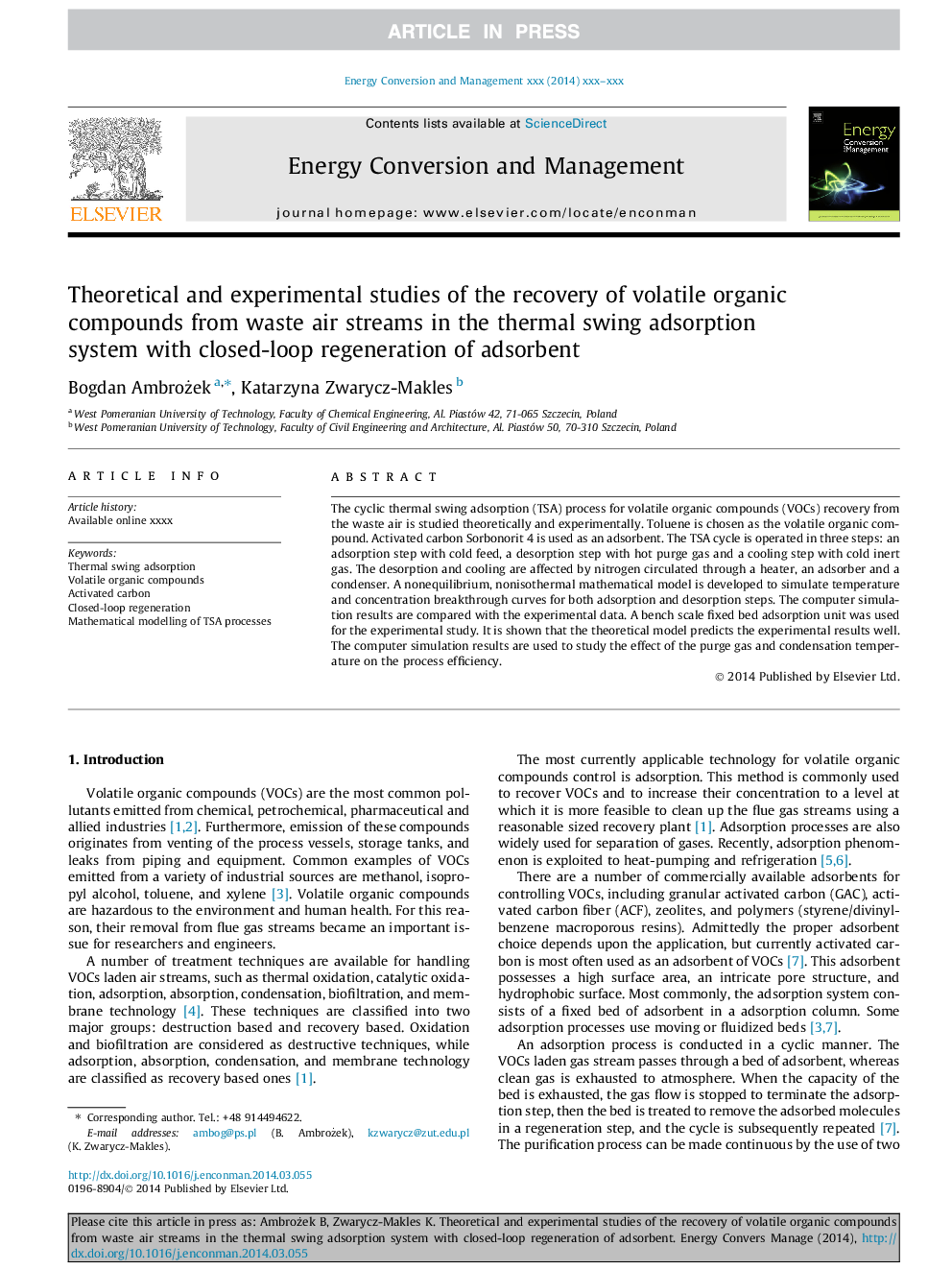| Article ID | Journal | Published Year | Pages | File Type |
|---|---|---|---|---|
| 7164637 | Energy Conversion and Management | 2014 | 9 Pages |
Abstract
The cyclic thermal swing adsorption (TSA) process for volatile organic compounds (VOCs) recovery from the waste air is studied theoretically and experimentally. Toluene is chosen as the volatile organic compound. Activated carbon Sorbonorit 4 is used as an adsorbent. The TSA cycle is operated in three steps: an adsorption step with cold feed, a desorption step with hot purge gas and a cooling step with cold inert gas. The desorption and cooling are affected by nitrogen circulated through a heater, an adsorber and a condenser. A nonequilibrium, nonisothermal mathematical model is developed to simulate temperature and concentration breakthrough curves for both adsorption and desorption steps. The computer simulation results are compared with the experimental data. A bench scale fixed bed adsorption unit was used for the experimental study. It is shown that the theoretical model predicts the experimental results well. The computer simulation results are used to study the effect of the purge gas and condensation temperature on the process efficiency.
Related Topics
Physical Sciences and Engineering
Energy
Energy (General)
Authors
Bogdan Ambrożek, Katarzyna Zwarycz-Makles,
